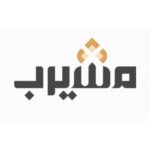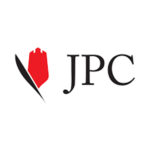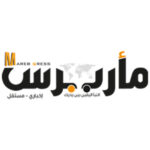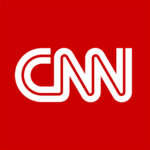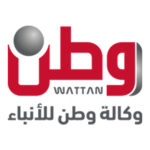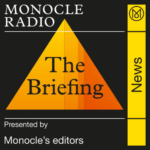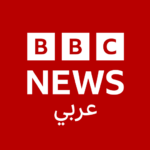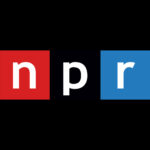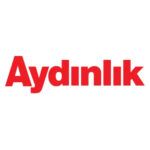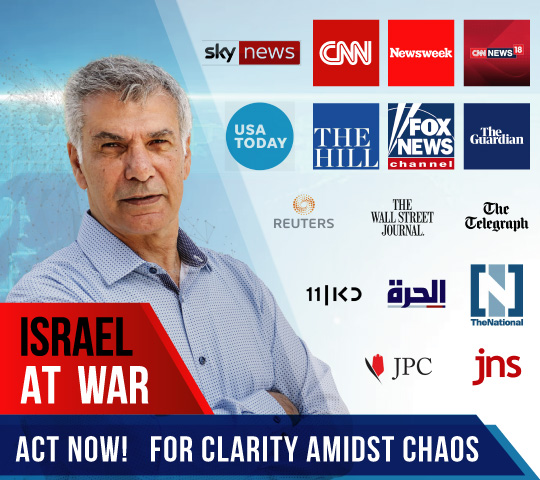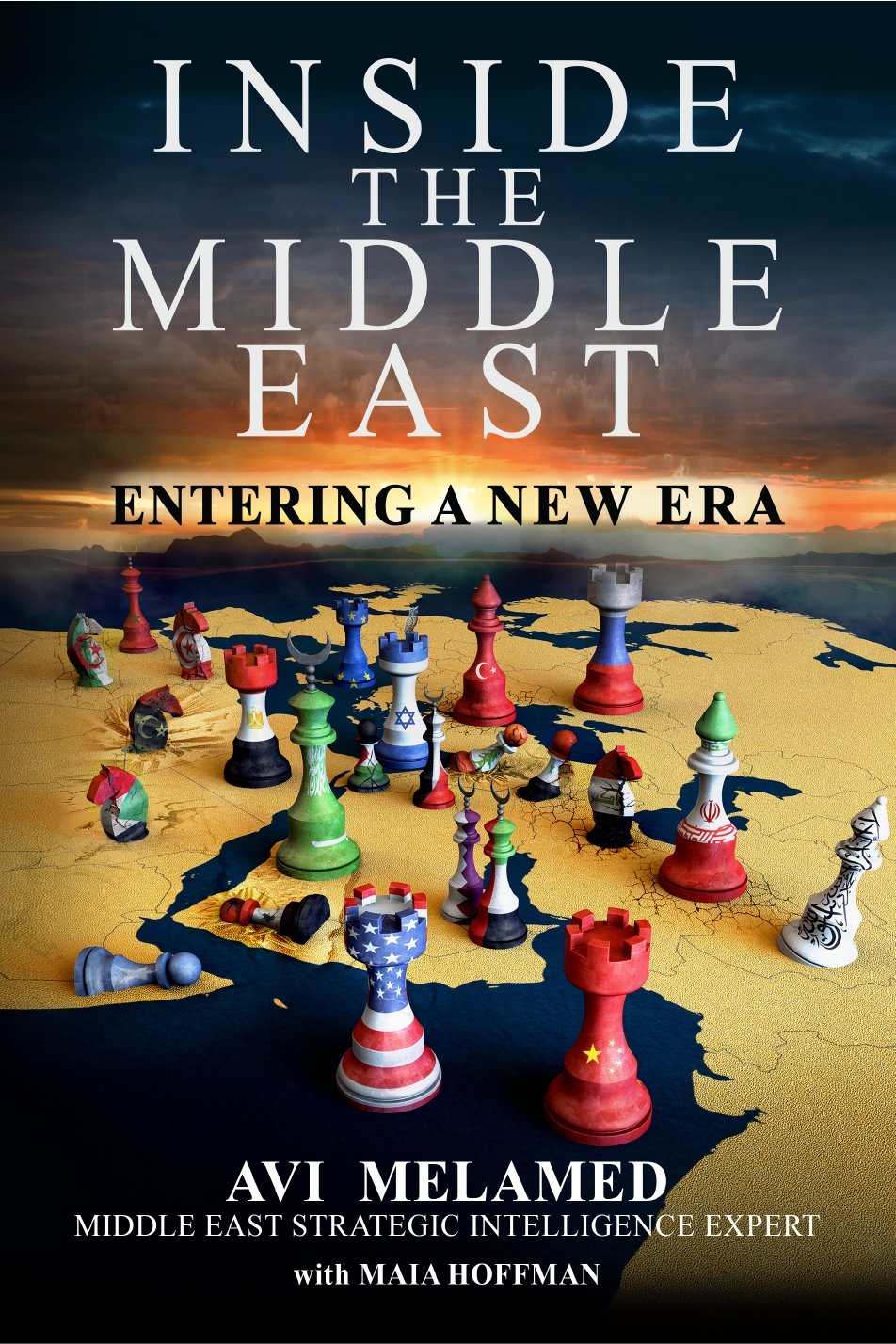|
Getting your Trinity Audio player ready...
|
Will Iran Deepen its Intervention in Iraq?
Information:
Since the Mullah regime seized power in Iran in 1979, their goal has been to “Export the Islamic Revolution.” The goal of which is for Iran to become the regional superpower and to restore the Shi’ites as the rulers of the Muslim world – a position which in the Shi’ite theology, was taken from them in Kerbala in the year 680.
Iraq has a significant role in the Iranian Mullah regime’s hegemonic vision.
One of the mechanisms the Mullah regime uses to extend its power and influence and to further its goals, is arming and supporting agents and proxies like Hezbollah in Lebanon, Hamas and IJIP (Islamic Jihad in Palestine) in the Gaza Strip, Houthi Shi’ite tribes in Yemen – and Shi’ite militias in Iraq.
A cornerstone of the Iranian policy is to build and control a land corridor stretching from Iran to the Mediterranean Sea, which the regime says is “vital for Iran’s strategic interest and national security.” Iraq is a critical component of this land bridge. And, of course – so is Syria. Iraqi Shi’ite militias, under the direction and guidance of Iran, are fighting in Syria to preserve Assad’s rule and to help Iran secure the Mullah controlled corridor. (For more on these matters read “The Bitter Fruits of the JCPOA” ~ May 2018 and “My Enemy is My Best Asset” ~ September 2017).
Iran’s growing influence and intervention in Iraq is causing growing unrest in Iraq. Of all the issues in the May 2018 election, “Keeping Iraq’s national identity and geographic integrity as an Arab State” was a slogan used by almost all the candidates in their campaigns.
Following the elections, the biggest political block is a coalition named “Inkaz al-Watan” (Saving the Homeland) composed of parties which reject Iran’s growing intervention in Iraq and in Iraqi affairs. That coalition, which to date, has all together 136 out of the total 329 Parliamentary seats – and will likely grow with the possible addition of Sunni and Kurdish parties – is led by major Iraqi Shi’ite political figures: Muqtada al-Sadr, the leader of Saeroun (Marching); Haider al-Abadi, the current Iraqi Prime Minister and the leader of the Al-Nasr (the Victory) Coalition which came in third with 42 seats; Vice-President Ayad Allawi, former Prime Minister and leader of the Al-Wataniya (The National) party who won 21 seats and, ‘Ammar al-Hakim, the leader of the Al-Hikma al-Wataniya (the National Wisdom) Movement and former head of the Islamic Supreme Council in Iraq which won 19 seats.
That coalition has the quiet blessing of Grand Ayatollah ‘Ali al-Sistani, viewed by many as the most influential figure in Iraqi politics and the most admired religious authority of Shi’ites worldwide. In the Shi’ite clerical order, the position of Grand Ayatollah is the highest rank. In Iraq there are four Grand Ayatollahs, the most prominent of which is al-Sistani. All four Grand Ayatollahs reject the theocratic model of the Iranian Mullah regime and oppose its core ideology, Wilayat al-Faqih “Rule of Jurist” – which demands total obedience to the Jurist who is immune from mistakes because he is filling in for – and therefore gets his orders from – the “Anticipated Imam” who is to return and redeem the world through a process in which most of mankind will perish.
Opposition to Iranian intervention in Iraq overwhelmingly dominates the anticipated Iraqi Parliament and Iraqi public opinion.
Yet, the Mullah regime maintains a strong influence on Iraqi politics. The fact that the Iranian-affiliated Iraqi party – Al-Fath (Triumph), a coalition of Iranian-backed Iraqi Shi’ite militias, came in second place winning 48 seats, and that the Dawlat al-Kanoun (The State of Law) party, led by former Iraqi Prime Minister, Nouri al-Maliki – who is affiliated with Iran, won 26 seats, indicates that the Mullah regime maintains a strong influence on Iraqi politics. (For an analysis of the May 2018 Election please see my article “Post-Election Iraq: A Spinning Whirlpool”)
Iran is attempting to duplicate in Iraq the same strategy it employed in Lebanon. Using its Iraqi Shi’ite militia proxies, the Mullah regime is trying to cultivate a power center in Iraq. The goal is that in time, with their cultivation, that power center will grow to become a state within a state to the point that it will dictate Iraq’s domestic and foreign policy in the service of Iran’s interests. This is exactly what the Iranian Mullah regime did with Hezbollah in Lebanon. However, there are some major differences between Iraq and Lebanon which limits the ability of the Mullah regime to successfully duplicate the Lebanese Hezbollah model in Iraq. Unlike the Hezbollah leadership in Lebanon, the supreme Shi’ite leadership in Iraq objects to Iranian intervention and rejects the core ideology of the Mullah regime – Wilayat al-Faqih. Different from the Lebanese army, the Iraqi army is more powerful than the independent militias. Hezbollah’s military is not a part of the Lebanese army, and is neither subdued to Lebanese law nor to the Lebanese government; the Iraqi militias however, are incorporated into the Iraqi security apparatus, are subdued to Iraqi law, and their budget comes from the Iraqi government. Hezbollah argues that keeping its military might is needed for Al-Muqawaa “The Resistance” (whose goal is an alternate world order in the spirit of Radical Islam, the eradication of Western influence in the Middle East, and most importantly, the unrelenting struggle against Israel until it is annihilated) to allegedly defend Lebanon from Israel. That argument is irrelevant in the case of Iraq which does not border Israel.
The question is will Iran’s intervention in Iraq further deepen to the extent that Iran will dictate Iraqi domestic and foreign policy?
Analysis:
In my view, the answer to this question lies in the ability of the Mullah regime to complete its mission of building its land corridor. The three major countries necessary to establish and preserve the corridor are Iran, Syria, and Iraq. Current, and expected developments in these three arenas leads me to evaluate that Iran’s ability to complete and sustain control of that corridor is doubtful.
In Iran the Mullah regime is under mounting distress and faces growing challenges. The current sanctions the US has imposed on Iran – which are expected to increase, are deepening Iran’s economic crisis, which fuels growing unrest in Iran. The Mullah regime must quickly address the escalating domestic challenges – increasing unemployment, rising poverty rates, out of control inflation, crumbling infrastructure, rising prices, a tumbling currency, etc. To address these challenges and placate an increasingly angry and resentful public, the regime will have to recalculate its priorities and allocate its resources domestically at the expense of its expansionist vision.
In Syria, it appears Iran has achieved its major goal – to secure the Assad regime. Yet, ironically, that achievement raises doubts regarding the feasibility of the land corridor. Why? It is mostly thanks to the Russian aerial umbrella that Assad remains in power. Now that Assad’s rule is stable, Putin’s next task is to stabilize the situation in Syria, so he can secure a political arrangement which will ensure that he harvests his dividends in return for Russia saving Assad – sharing in Syria’s rehabilitation, controlling Syria’s oil industry, expanding Russia’s aerial and naval bases in Syria etc. The Mullah’s land corridor is a recipe for severe instability. The corridor will be used to further expand Iran’s military presence in Syria and as a platform for Iran’s network of proxies to launch attacks on Israel. Therefore, that corridor turns Syria into ground-zero for an Israeli-Iranian zero-sum game. Israel has made it very clear that it will act forcefully at all costs to prevent the Mullah’s plan (on that read The Israeli – Iranian Direct Military Collision: At the Threshold of a Critical Junction ~ February 2018). An Israeli-Iranian military confrontation in Syria is neither in Putin’s nor Assad’s interest. Such a scenario would likely drag Assad right back into the mud and would put Putin on an undesired and unnecessary collision course with Israel and the US. To avoid such a scenario, it is much simpler for Putin, and Assad, to throw the Mullahs under the bus by limiting – if not ending – Iran’s and its proxies military presence in Syria. In May 2018, Putin told Assad that “All foreign troops will leave Syria.” Though he did not mention a time frame, the Mullahs clearly did not like that statement. Following their Helsinki summit in July 2018, Putin and Trump made clear that both the US and Russia will prevent Iran’s goal of turning Syria into a stage from which they can launch attacks on Israel. In August 2018 Russia forced Iran and their proxies in Syria to withdraw to fifty-miles from the Israel-Syria cease-fire line in the Golan Heights. And most recently, on August 19th the United States National Security Adviser, John Bolton, confirmed that the US, Israel, and Russia share the objective of removing Iranian and Iranian-led forces from Syria and ending Iran’s support of the Lebanese terror group Hezbollah. The Mullah regime also receives disturbing signals from Bashar al-Assad. In July 2018 the Syrian news agency, Al-Watan, quoted a Syrian official strongly condemning a statement made by Ali Akbar Velayati, the Senior Adviser to Iran’s supreme leader, Ali Khamenei who said, “If not for Iranian support, Damascus would have fallen into the hands of ISIS.” One should remember that Iran justifies its (and its proxies) presence in Syria by insisting that they are there by Assad’s invitation. That invitation could expire, and Iran knows that. Eager to ensure Iranian interests in Syria, the Iranian Minister of Defense rushed to visit Syria this week to sign (on August 26, 2018) a military cooperation agreement, according to which Iran will participate in the rehabilitation of the Syrian army. Given, Iran’s economic challenges, Assad’s commitment to no one except himself and what is ultimately in his interest, the diverging interests between Putin and Iran and their competition for control of post-war Syria, it is doubtful this agreement will secure the Mullah regime’s goal of ensuring it is the primary power on the ground in Syria.
Without Iraq, there is no Iranian corridor. In Iraq, as noted above “Keeping Iraq’s national identity and geographic integrity as an Arab State” was a core issue in the recent Iraqi elections. And the results of the election, and the expected composition of the Parliament, reflect that sentiment. One would expect Iraqi Sunni Arabs and Sunni Kurds to object to Iranian interference. However, there is also widespread rejection among Iraqi Shi’ites – sentiments which were clearly expressed during the violent riots and mass protests which erupted and quickly spread in the predominantly Shi’ite region of south Iraq in mid July 2018. The residents of this oil rich area took to the streets primarily to protest corruption, the lack of clean water, electricity, government services, and jobs. However, the riots also revealed deep seated anti-Iranian sentiments, manifested in anti-Iran slogans and physical attacks on offices and properties of Pro-Iranian Iraqi groups. The Iraqi Shi’ite rejection of the growing Iranian intervention in Iraq is rooted in two major reasons: First, Iraqi Shi’ites are Arab – not Persian and therefore “look down” upon Persians. Second, is the objection of the Iraqi based Grand Ayatollahs to Iran’s intervention as well as their objection to the model of the Iranian Mullah regime and its ideological core concept – Wilayat al-Faqih.
Aside from the domestic objection to Iranian interference and presence in Iraq, Iraq’s relationship with the Arab Gulf states is another reason for Iraq’s opposition to the Mullah regime’s intervention. Following the Iraqi occupation of Kuwait (1990-1991) Iraqi-Saudi relations were severed and resumed in 2017. Since then the relationship has flourished. This holds economic promise for Iraq’s tattered economy and war-ravaged country. The Gulf markets are major consumers of Iraqi goods, and the highways that connect Iraq to Jordan and then to the Gulf are Iraq’s global trade lifeline. The Gulf Monarchies are also a very substantial source of the funding required for the rehabilitation of Iraq, which is currently estimated at 100 billion USD. At a conference held in Kuwait in February 2018, a total of 25 billion USD was raised for the rehabilitation of Iraq – mostly from the Gulf monarchies – and to a lesser extent from the United States, the United Kingdom, and Turkey. The fact that Kuwait hosted the conference is significant. Following Iraq’s occupation of Kuwait, a United Nations decision ordered Iraq to compensate Kuwait to the tune of 39 billion USD. Iraq has thus far paid about 10 billion USD. Kuwait has recently signaled that it is willing to be flexible about the pace of the payments; they have also provided Iraq with equipment to desalinate water and produce electricity to help Iraq’s parched southern cities which also suffer from acute electricity shortages. Yet there are no free meals. In return for Kuwait’s flexibility and their aid, the Arab Gulf states expect the Iraqi government to limit Iranian influence in Iraq.
In the context of Iraq’s relationship with the Gulf states, there is another significant player Iraq must take into consideration and be tuned to – and that is China – one of the world’s leading consumers of oil, who is also focusing on strengthening its partnerships with the Arab Gulf countries. In pursuit of their “One Belt One Road” initiative, China is increasing its activity and presence in the Arabian Gulf. Chinese companies are involved in large scale projects across the Gulf Monarchies. Following the visit of Chinese President Xi Jinping to Saudi Arabia in January 2016, Saudi King Salman was hosted in China in March 2017. The encounters resulted in cooperative and development agreements in multiple areas from education to space – reportedly worth 65 billion USD. In July 2018 the Chinese President made his first visit to the United Arab Emirates, resulting in multi-sector agreements between the countries and upgrading their relationship to a ‘comprehensive strategic partnership.’ In August 2018 Kuwait and China signed cooperation agreements and reconfirmed their joint vision to building the future Kuwaiti city of “Al-Harir” (The Silk) City in northeastern Kuwait. A Chinese engineering and construction company was hired by the Yemenite government to develop the port of ‘Aden, and in July 2018 Yemen’s Foreign Minister visited China to explore further economic cooperation. China also has close relations with Oman, including cooperating to combat piracy on the Red Sea and in the Indian Ocean. China maintains productive and friendly relations with both Iraq and Iran – and both must be very tuned to China’s interest in stability in the Gulf. If Iraq is part of the Iranian Mullah land corridor it will result in growing instability in the region, which could compromise Chinese investments and interests in the Gulf.
And indeed, the Iraqi government has recently signaled its objection to the Mullah land corridor. In July 2018, an Iraqi Border Patrol Spokesman announced that Iraq plans to build a fence along its 600 km border with Syria. It has also been reported that an Iraqi army unit based in the West al-Anbar Province of Iraq, which borders Syria, prevented pro-Iranian Iraqi Shi’ite militants from crossing into Syria. Following the imposition of new US sanctions on Iran in August 2018, Iraqi Prime Minister, al-Abadi said that though the sanctions are a “strategic mistake that Iraq does not support,” Iraq will cooperate with US policy “because of Iraq’s interest.” As expected, al-Abadi’s statement resulted in Iranian discontent and a planned visit by al-Abadi to Iran in mid-August 2018 was cancelled.
And finally, another serious challenge to the viability of the land corridor is the military vulnerability of the route which is to link Teheran and Beirut. There are two major paths which Iran could use for such a corridor – both of which cross from Iraq through central and southern Syria. Both routes have a military Achilles Heel – each crosses hundreds of miles of primarily wide-open desert, and both routes are under US aerial control.
The northern route could go from Al-Qaim, which is on the Iraqi side of the Iraqi-Syrian border northwest to the next Syrian town of Abu Kemal which is located at the bank of the Euphrates River. As of July 2018, the al-Qaim Border Crossing is closed and construction work to reopen the passage is underway. Northeastern Syria and the eastern bank of the Euphrates River is an area mostly controlled by Syrian Kurdish military forces backed by the United States. As a result, the Iranian Revolutionary Guards (IRG) and their Iraqi Shi’ite proxies are using bypass dirt roads. On more than one occasion, US forces have attacked Assad’s military units as well as Iraqi Shi’ite militias trying to operate in that area. Apparently, the US is not the only entity with its eyes keenly focused on what is going on that route. As recently as June 18, 2018 an aerial attack on the headquarters of pro-Iranian Iraqi Shi’ite militias located on one of those roads near Abu Kemal, reportedly killed dozens of Iraqi Shi’ite militants, and possibly Iranian Revolutionary Guard officers. The attack was attributed to Israel who remained silent.
The southern route would have the corridor entering Syria at the Al-Waleed Border Crossing, adjacent to the Iraq-Syria-Jordan triangle border. Like Israel, Jordan views the Iranian corridor as a severe threat. The US administration, committed to Jordan’s security and stability and consistent in its insistence that it will prevent the establishment of the Iranian corridor, declares the border triangle a no-conflict zone and provides an aerial umbrella to enforce its policy.
Prediction:
Iraq is a critical component in the Mullah regime’s expansionist strategy. Iran will therefore try to further increase its influence in Iraq to permanently maintain the land corridor.
The future of the Mullah’s land corridor is part of the battle over Iraq’s identity and independence.
The deepening economic crisis in Iran, the US and Russian objection to the Mullah’s expansionist vision, the strong and increasing Iraqi opposition to Iranian intervention, and the military vulnerability of the land corridor reduce the likelihood of a permanent Iranian controlled corridor from Iran through Iraq through Syria to the Mediterranean shores of Lebanon.
For Iraq this means the further strengthening of the Iraqi nationalist camps and the decrease of Iranian influence and intervention in Iraq, a process I predict will gain momentum in 2019.
Click Here To Download PDF of this Article
If you want to have a better understanding of the news and what really drives the unfolding events…
Read the latest book of Avi Melamed,
INSIDE THE MIDDLE EAST | ENTERING A NEW ERA, available now >>>
Follow me on Twitter @AviMelamed; Facebook @InsideTheMiddleEast; for more Videos on YouTube https://www.youtube.com/c/AviMelamed
I can always be reached at Av*@********ed.com








